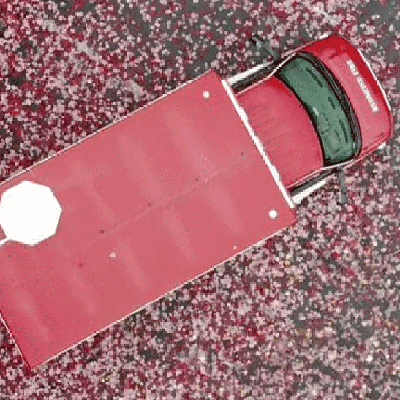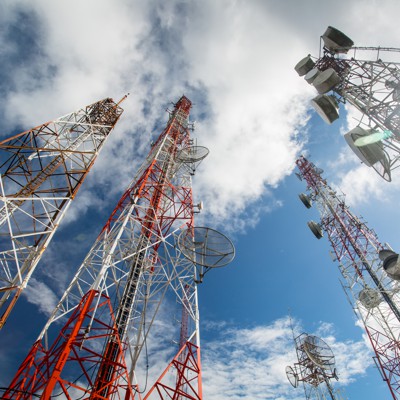- Sustain With Age
- Posts
- 911: "You Used To Call Me On Your Landline"
911: "You Used To Call Me On Your Landline"
Disaster, crisis, and other emergency comms are being transformed. Long overdue, the efforts should be applauded while recognizing there is still much to be desired, especially in ensuring access for those often left out.

Today’s newsletter discusses mental health and suicide. If you are struggling with your sexuality, gender identity, or just want to talk further about these issues, you can call The Trevor Project at 1-866-488-7386 or text 678678. You can reach the National Lifeline at 988 for any reason. If you are outside the United States, Crisis Text Line is available for the UK, Canada, and Ireland. The Disaster Distress Helpline for those dealing with a US disaster, tragedy, or the aftereffects, can be reached at 1-800-985-5990. You are encouraged not to read this newsletter if it is not something you want to engage with today.
Modernization of Emergency Communications: 988’s Success and Remaining Potential
The national suicide hotline in the US used to be a 10-digit number. Impossible to remember, not able to receive texts, though still seeing significant volume.
A song was even created to help remember it.
Finally, 2 years ago Congress and the FCC approved the switch to the simple to remember and advertise: 988. In doing so, they greatly increased access and awareness to this critical resource.
Much like 911, 988 routes locally, allowing for a caller to connect directly with resources in their community, if capacity exists to answer.
While the switch to 988 is laudable, it was not matched with the funding needed to sustain an already strained system. The switch led to more calls, a likely good thing as it means more people were willing or able to call, though a lack of operators on the other end has led to a skyrocketing dropped calls rate, where callers, often in crisis, were not willing to wait as long as it took for someone to answer.
988 is one of a network of hotlines in the US including a line specifically for veterans and another for natural disasters. Separate services exist like the Trevor Project for LGBTQ+ youth and Crisis Text Line as a digital-forward option (online messaging, texting, and WhatsApp). I even worked for a line specific to my university, offered at a dozen campuses now, called Lean On Me which offers peer support via text.
All this to say, those answering these calls and communications are putting in incredible work, but are being strained to a breaking point. We rely on a system of nonprofits providing alternatives and add-ons to 988 and the counselors answering calls themselves often work for nonprofits. The government is only providing some of the overarching structure and guidance and some funding. Ongoing operational costs are on states and localities and the nonprofits must find governmental and non-governmental ways to fund themselves to be able to answer the calls coming in. As we know, regardless of services offered, it is not the best time to be a nonprofit.
Callers are further referred to in-community services which could be public or private healthcare of some form, another area with its own funding and structural issues.
Unanswered calls can have very real, deadly consequences. In the best of cases, calls that take too long to answer that they are abandoned have the detrimental effect of eroding trust in the system or forcing callers to rely on 911 and other systems, strained in their own right, and not always equipped to respond in the same way as trained 988 counselors.
States have taken important steps to support the network and shift their approach to mental health issues from police-first, but it is not funded in a sustainable or consistent way.
911 is often managed municipally or regionally and funded directly through fees on phone users. While itself a flawed model, it offers some predictability for budgeting and generally has effective response times for answering the calls themselves (physical response times to those calls are a separate issue with their own funding struggles).
988 on the other hand relies on nonprofit and other entities at the regional and state levels that are not funded in the same way everywhere or even based on call volume. 911 funding is often conducted at the county level, an approach allowing somewhat of a correlation to population and likely capacity needs. However, digital service taxes have long been recognized as “missing” people whose billing address or other info does not match up with where they are today. While perhaps not a detrimental fact when it comes to streaming service taxes, this situation creates difficulties for funding crisis service capacities.
I have lived in 4 different area codes over the last decade, but never changed my phone number or its area code. Perhaps someone moved to my hometown area code while I moved to theirs, but perhaps not. Multiple that by a few hundred or thousand and you can see how funding and capacities across 988 and 911 are affected.
Beyond funding, these approaches by location carry over to issues in the response system itself, with text messages to 988 routed to crisis centers based on the area code of the user’s phone number. The area code on a mobile phone, however, often does not match the user’s physical location. 988 has begun the switch to “georouting” for voice calls and is aiming to do the same for texts as 911 generally does.
Increasingly lengthy disclaimers said during or written under sports betting commercials offer a helpful counter example to recognize that centralized, short, national numbers with mostly-local routing is truly a benefit of 911 and 988, even taking into account all the issues I just laid out.
These disclaimers are the result of different phone numbers created as each state legalizes gambling and creates its own hotline. The lack of coordination reduces access to services through confusion. A caller in Illinois sees a commercial and has to squint to be sure not to call the New York gambling number. State-by-state legalization of marijuana has also led to disjointed safety measures with differing taxes, rules, and other policies harming both businesses and consumers across seemingly open state borders. The National Problem Gambling Helpline Modernization Project is working to “streamline marketing across all materials” through a “caller-centric system,” sharing the goals of 988.
Again, many states have taken the rollout of 988 quite seriously, devising solutions and reporting publicly on successes and struggles, and acting in a nonpartisan fashion, but as always it is hard to only rely on states for action on these issues with the aforementioned movement of people, inconsistencies in funding, and routing difficulties.
However, Texas should be highlighted as a concerning example with a $20 billion+ budget surplus, yet not allocating the mere $7 million additionally needed for operational costs of their 988 system. Further, money should also be spent to hire and train counselors with an expected increase in chats and texts.
Predictable, permanent funding, even if not enough to cover all costs, is often preferable, allowing for planning of capacity, but less than half of states have implemented any type of funding scheme similar to 911 via a surcharge on phone bills or dedicated trust fund. Response centers and an effective 988 national lifeline offer relatively low costs for the lives they have the potential to save.
National funding, too, would not be unprecedented, with the Universal Service Fund providing both subsidized phone service and broadband through fees on phone bills, though only applying to interstate revenue with 42 states imposing their own fees on intrastate revenue. Failure to capture equal funding across users of any system prevent universal access and hinder infrastructure upgrades.
As much hand-wringing continues over federal funding freezes and threats, any sense of permanence and consolidation in the various federal and state broadband and communication systems – emergency and not – will only strengthen the system and lead to efficiencies that save money down the road.
In addition to funding, a major concern on 988 and even 911 evolution should be governmental vacancies. Intentional vacancies or ones that have just become too contentious to see movement led to gridlock in the Biden administration across various agencies and the same could happen with the FCC, potentially putting a halt to these critical programs’ development, or worse, make them partisan or caught up in efficiency measures, as seems to be happening.
These hotlines have done much good so far, but there is more to be done to make them efficient and fully effective. And it must be noted that this network serves to support people in a safety net fashion while the root causes of their issues are a separate area to be addressed by government or otherwise.
If you are struggling with your sexuality, gender identity, or just want to talk further about these issues, you can call The Trevor Project at 1-866-488-7386 or text 678678. You can reach the National Lifeline at 988. Full contact list above.
How Do We Sustain With Age From Here?
A few readers have said to me - “um… I thought you were only going to write about environmental sustainability.” Without co-opting the term, sustainability can certainly be extended to nearly any topic from finances to work-life balance. I think a strong case exists linking “hotlines” and emergency communications to existing and future disasters fueled by climate change, and, aren’t all disasters environmental?
As disasters increase from our own causes including, but not only due to climate change, safety nets and support systems will be increasingly important. While we have discussed in these pages how we need to prioritize our attention in ways to address root causes, operating 988 is relatively cheap and worthwhile on its own as it has proven it can save lives.
While the litany of phone numbers across topics makes it feel as if we are inundated with resources, they can be disjointed and overwhelmed themselves, hurting the entire system. Sounds like an injection of a sustainability mindset would be worthwhile!
In addition to receiving communications from residents, crisis and emergency communication centers of cities are increasingly creating helpful tools for them to contact residents, sharing critical, local, real-time information via apps, texts, and more. Investments in these tools will be crucial as climate disasters and more pile up and our patchwork of systems faces congestion.
Further, already marginalized groups tend to be those worst affected by disasters or left out of formal recovery efforts. To be very clear, this does not mean that “non-marginalized” people do not suffer or face difficulties in receiving government and other assistance, but rather, leaving any group or person out tends to harm everyone.
There is some great writing out there explaining how misogyny and gender norms harm men. Not always in the same violent ways they affect women, but this example simply demonstrates how interconnected issues are and why efforts, focus, and attention can and should be directed in certain places to correct historical wrongs while simultaneously building a better future for everyone.
A final tip: the amazing folks at Samaritans illuminate an important fact we tend not to know: talking about suicide is better than not talking about it. Decades of extensive research demonstrate that you cannot “put the idea of suicide” into someone’s mind. Bringing it up in conversation actually opens the door for a conversation and risk reduction. Talk to people. Don’t steer away from difficult topics.
In unfortunate and related news, HHS plans to cut the national suicide hotline’s program for LGBTQ youth. A petition exists here and more information here.
Further Reading on the Electric Backburner…if you will
A Quote To Remember Me By
Breathe. And if you can’t, just try again.
Happy pride, 😘
Kyle


